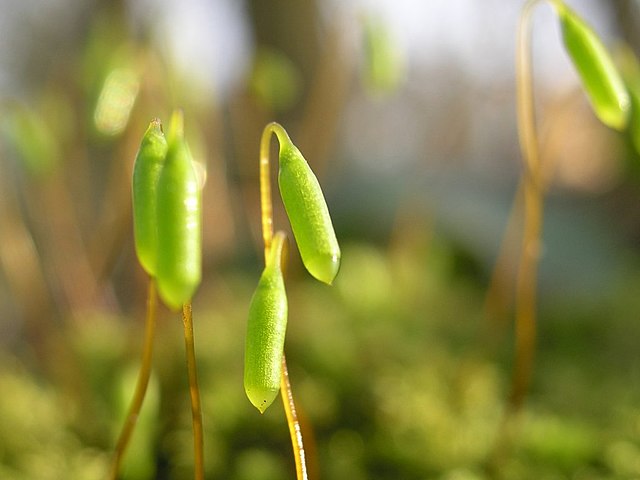A strobilus is a structure present on many land plant species consisting of sporangia-bearing structures densely aggregated along a stem. Strobili are often called cones, but some botanists restrict the use of the term cone to the woody seed strobili of conifers. Strobili are characterized by a central axis surrounded by spirally arranged or decussate structures that may be modified leaves or modified stems.
Strobili of Lycopodium
Liquid-preserved strobili of Lycopodium, showing reniform sporangia through translucent sporophylls
Micrograph of the strobilus of Lycopodium sp., showing spores borne in sporangia
Strobili of Selaginella
A sporangium ; pl.: sporangia) is an enclosure in which spores are formed. It can be composed of a single cell or can be multicellular. Virtually all plants, fungi, and many other groups form sporangia at some point in their life cycle. Sporangia can produce spores by mitosis, but in land plants and many fungi, sporangia produce genetically distinct haploid spores by meiosis.
Photomicrograph of a mature sporangium of an Absidia mold
Moss sporangia (the capsule and the stalk/seta make up the diploid asexual sporophyte generation)
Sporangia (clustered in sori) on a fern leaf
Scanning electron micrograph of fern leptosporangia








